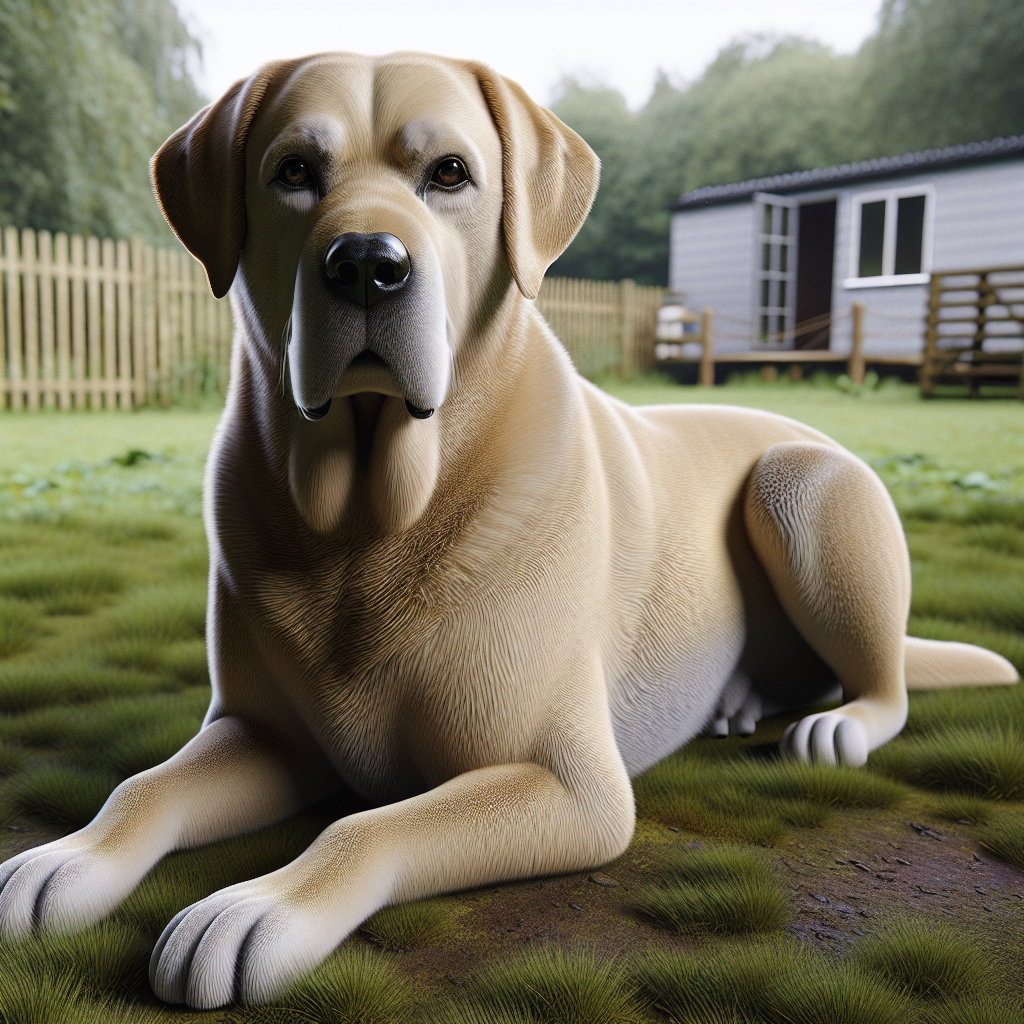Introduction to Dog Fleas

Dog fleas are small, flightless insects that parasitize dogs by feeding on their blood. Known scientifically as Ctenocephalides canis, these ectoparasites are notorious for causing discomfort and potential health issues in their canine hosts. They are characterized by their laterally compressed bodies, which allow them to move easily through an animal’s fur, and their powerful hind legs, enabling them to jump long distances relative to their size.
Common misconceptions about dog fleas often contribute to misunderstandings about their control and prevention. One widespread belief is that fleas are only a problem during the summer months. While it is true that fleas thrive in warm, humid environments, they can persist indoors year-round, especially in homes with central heating. Another misconception is that fleas are only an issue for outdoor dogs. In reality, even dogs that spend most of their time indoors can become infested, as fleas can be brought into the home on clothing, other pets, or visitors.
Types of Fleas Affecting Dogs
While the term “dog fleas” specifically refers to Ctenocephalides canis, several flea species can infest dogs, each with its own characteristics and potential health impacts.
Dog Flea (Ctenocephalides canis)
The dog flea is specifically adapted to live on canines, although it can also feed on other mammals, including humans, in the absence of its preferred host. These fleas are distinguished by their small size, brown color, and the distinctive backward-facing hairs that help them navigate through fur.
Cat Flea (Ctenocephalides felis)
Interestingly, the cat flea, Ctenocephalides felis, is more commonly found on dogs than the dog flea. This species is highly adaptable and can infest a wide range of hosts, including cats, dogs, and humans. Cat fleas are similar in appearance to dog fleas, making them difficult to differentiate without microscopic examination.
Other Flea Species
In addition to dog and cat fleas, dogs may occasionally encounter other flea species, such as the human flea (Pulex irritans) and the rabbit flea (Spilopsyllus cuniculi). However, these are less common and typically do not establish long-term infestations on dogs.
How to Identify Fleas on Dogs
Identifying a flea infestation early is crucial for effective management and prevention of potential health issues. Dog owners should be vigilant for both the physical presence of fleas and the signs of infestation.
Physical Appearance of Fleas
Fleas are small, about 1-3 mm in length, and have a dark brown, shiny appearance. Their flat bodies and powerful hind legs make them adept at moving quickly through fur and jumping impressive distances. A close inspection of a dog’s fur, especially around the base of the tail and neck, may reveal these tiny insects or their droppings, which resemble black pepper.
Signs and Symptoms of Flea Infestation
Flea infestations can cause a range of symptoms in dogs. The most common sign is incessant scratching and biting at the skin, often leading to red, inflamed areas. Dogs may also develop papules or small bumps on the skin, particularly around the base of the tail. In severe cases, hair loss and open sores may occur due to constant irritation and scratching.
The Life Cycle of Fleas
Understanding the flea life cycle is essential for effective control and prevention measures. Fleas undergo a complete metamorphosis, which includes several distinct stages.
Stages of Development
The flea life cycle consists of four stages: egg, larva, pupa, and adult. Female fleas lay eggs on the host, which then fall off into the environment, such as bedding or carpet. These eggs hatch into larvae, which feed on organic debris and flea feces. After a period of growth, the larvae spin cocoons and enter the pupal stage, where they develop into adults. Adult fleas emerge from the pupae when they detect vibrations, warmth, or carbon dioxide, indicating the presence of a host.
Environmental Factors Influencing Growth
Environmental conditions play a significant role in the flea life cycle. Warm, humid environments are ideal for flea development, allowing them to complete their life cycle in as little as two weeks. In contrast, cooler or drier conditions can prolong development. Understanding these factors can help in implementing targeted control measures, such as treating indoor environments and maintaining low humidity levels.
Health Implications of Fleas on Dogs
Dog fleas are not just a nuisance; they can have serious health implications for affected dogs. These range from mild irritation to severe skin infections and the transmission of diseases.
Itching and Skin Irritation
The most immediate consequence of dog flea infestations is itching and skin irritation. Flea bites cause a localized allergic reaction in many dogs, leading to intense itching and discomfort. This can result in excessive scratching, biting, and licking of the affected areas, exacerbating the problem.
Potential for Hair Loss and Skin Infections
Chronic flea infestations can lead to hair loss and open sores from constant scratching. These sores can become infected with bacteria, leading to more severe skin conditions that require veterinary intervention. In some cases, dogs may develop flea allergy dermatitis, an allergic reaction to flea saliva, causing severe itching and secondary infections.
Transmission of Diseases
Beyond skin irritation, fleas are vectors for various diseases and parasites. They can transmit tapeworms to dogs if ingested during grooming. Additionally, fleas are known carriers of Bartonella, the bacteria responsible for bartonellosis, which can cause fever, fatigue, and swollen lymph nodes in dogs. In rare cases, severe infestations can lead to anemia, particularly in puppies or small dogs, due to significant blood loss.
In managing dog fleas, it’s important to adopt a comprehensive approach that addresses both the affected animal and its environment. Regular grooming, frequent vacuuming, and the use of flea preventatives can help keep these persistent parasites at bay, ensuring the health and comfort of your canine companion.
Preventing Flea Infestations
Dog fleas are a common concern for pet owners, and preventing these pesky parasites from infesting your furry friend is crucial. By implementing regular grooming and maintaining hygiene practices, you can significantly reduce the risk of flea infestations.
Regular Grooming and Hygiene Practices
Regular grooming plays a vital role in preventing dog fleas. Brushing your dog’s coat not only helps remove loose hair and dirt but also allows you to check for any signs of fleas or flea dirt. Bathing your dog with a gentle, flea-repellent shampoo can also help keep these pests at bay. It’s important to remember that over-bathing can strip natural oils from your dog’s skin, so consult your veterinarian for an appropriate bathing schedule.
Keeping your dog’s living environment clean is equally important. Vacuuming your home frequently, particularly areas where your dog spends a lot of time, can eliminate flea eggs and larvae. Washing your dog’s bedding in hot water on a regular basis will also help control any potential flea populations.
Environmental Control and Cleaning
Fleas thrive not only on your dog but also in their surrounding environment. Therefore, controlling and cleaning your dog’s environment is crucial in preventing flea infestations. Start by treating your yard, especially in warm, humid climates where fleas tend to thrive. Using pet-safe insecticides or natural options like diatomaceous earth can reduce flea populations outdoors.
Indoors, focus on regular vacuuming and washing of textiles, such as carpets, curtains, and upholstery. This helps remove any flea eggs or larvae that may have settled in these areas. Additionally, consider using flea traps or sprays that are safe for indoor use to prevent dog fleas from breeding in your home.
Treatment Options for Flea Infestations
Despite preventive measures, dog fleas can sometimes find their way onto your pet. In such cases, prompt treatment is essential to keep your dog comfortable and prevent further infestation.
Topical and Oral Medications
There are a variety of topical and oral medications available for treating dog fleas. Topical treatments, often referred to as spot-on treatments, are applied directly to your dog’s skin, usually at the back of the neck. These treatments provide protection by killing fleas on contact and preventing future infestations.
Oral medications, on the other hand, are ingested by your dog and work systemically to eliminate fleas. These medications are often highly effective and can offer long-lasting protection. It’s important to consult your veterinarian to determine the most suitable treatment option for your dog, considering factors such as age, weight, and any potential allergies.
Natural Remedies and Alternatives
For those seeking a more natural approach to treating dog fleas, several alternatives exist. Essential oils, such as lavender and cedarwood, are known for their flea-repelling properties. However, it’s crucial to use them with caution, as some essential oils can be toxic to pets.
Another natural option is diatomaceous earth, a fine powder made from fossilized algae. Sprinkling it around your home and on your dog’s coat can help dehydrate and kill fleas. Always ensure that any natural remedy you choose is safe for your dog, and consult with your veterinarian if you have any concerns.
Step-by-Step Guide to Flea Removal
Once you’ve identified a flea infestation, taking immediate action is crucial to relieve your dog and prevent further spread.
Bathing and Combing Techniques
Start by giving your dog a thorough bath using a flea-specific shampoo. This will help drown and remove a significant number of fleas. Ensure you follow the instructions on the product label, and rinse your dog thoroughly to avoid any residue.
After bathing, use a fine-toothed flea comb to meticulously comb through your dog’s fur. This will help remove any remaining fleas and flea dirt. Pay close attention to areas where fleas tend to congregate, such as the neck, tail, and belly.
Application of Flea Treatments
Once your dog is clean and dry, apply a flea treatment as recommended by your veterinarian. Whether it’s a topical solution or an oral medication, ensure that you follow the dosage and application instructions carefully. Consistent and correct application is essential for effective flea control.
Long-Term Flea Management Strategies
Managing dog fleas is an ongoing process that requires vigilance and consistency. By implementing long-term strategies, you can keep these pests at bay and ensure your dog’s comfort.
Regular Use of Preventive Products
Investing in preventive products is a key component of long-term flea management. Monthly flea preventatives, such as spot-on treatments or oral medications, can provide continuous protection for your dog. Set reminders to ensure timely administration and reduce the risk of future infestations.
Monitoring and Maintenance
Regular monitoring is essential to catch any signs of fleas early. Check your dog’s coat frequently for any signs of itching, scratching, or flea dirt. Additionally, maintain a clean living environment by continuing regular vacuuming and washing of textiles.
Fleas on Puppies: Special Considerations
Puppies are particularly susceptible to dog fleas due to their developing immune systems and delicate skin. Taking special precautions when dealing with fleas on puppies is vital to ensure their health and safety.
Identifying Fleas on Puppies
Identifying fleas on puppies can be challenging due to their smaller size and finer fur. Look for signs such as excessive scratching, biting, or restlessness. Flea dirt, which resembles tiny black specks, may also be present on their skin or bedding. If you suspect a flea infestation, consult your veterinarian promptly for guidance.
Safe Treatment Options for Young Dogs
Treating fleas on puppies requires extra care, as many flea treatments are not suitable for young dogs. Consult your veterinarian for advice on safe and effective treatment options. Some flea shampoos and combs are specifically designed for puppies, providing a gentle yet effective solution. Always prioritize your puppy’s safety and well-being when choosing flea treatments.
Common Mistakes in Flea Control
The battle against dog fleas is one that pet owners know all too well. Despite best efforts, common mistakes in flea control often lead to persistent infestations and recurring problems. Understanding these mistakes can help ensure more effective control over these pesky parasites.
Misuse of Products
One of the most frequent mistakes is the misuse of flea control products. Many dog owners may not realize that using products designed for other animals, such as cats, can be dangerous and ineffective. Additionally, failing to adhere to the recommended dosage or application frequency can render treatments ineffective. For instance, applying a topical treatment once and expecting year-round protection against dog fleas is unrealistic. Consistency and proper usage are key; always follow the manufacturer’s instructions and consult with a vet if you’re unsure about product suitability for your pet.
Neglecting Environmental Control
Focusing solely on the dog while neglecting environmental control is another common error. Dog fleas do not just reside on your pet; they can also be found in the environment, particularly in areas where your dog spends a lot of time. This includes bedding, carpets, and furniture. Effective flea control requires a comprehensive approach, targeting both the dog and its surroundings. Regular cleaning, vacuuming, and washing of your pet’s belongings can help eliminate flea eggs and larvae in the environment, breaking the life cycle of these parasites.
Seasonal Variations in Flea Activity
Understanding the seasonal patterns of flea activity is crucial for effective prevention and control. Dog fleas are influenced by environmental conditions, and their activity can vary depending on the time of year.
Peak Times for Flea Infestation
Fleas thrive in warm and humid environments, making spring and summer peak times for infestations. During these months, dog fleas are more active, increasing the likelihood of your pet picking them up. However, it’s important to note that fleas can survive indoors during the colder months, especially in heated homes. Therefore, while infestations are less common in winter, they are not impossible.
Adjusting Prevention Measures Accordingly
Adjusting prevention measures according to the season can significantly enhance flea control efforts. During peak flea seasons, consider increasing the frequency of preventive treatments and be extra vigilant about environmental control. In the colder months, continue with regular flea checks and maintain a basic level of prevention to ensure dog fleas do not find a way into your home.
The Role of Vets in Flea Management
Veterinarians play a vital role in managing and preventing flea infestations. Their expertise and access to a range of treatment options make them an invaluable resource for pet owners dealing with dog fleas.
When to Seek Professional Help
It can be challenging to know when to handle flea issues yourself and when to seek professional help. If you notice signs of a severe infestation, such as relentless scratching, hair loss, or skin irritation, it may be time to consult a vet. Additionally, if your efforts to control dog fleas are unsuccessful, a veterinarian can provide guidance and recommend effective treatment plans.
Veterinary-Recommended Treatments
Vets have access to a variety of treatments that are not available over the counter. These may include oral medications, topical treatments, or even injections that provide long-term protection against fleas. Veterinary-recommended products are often more effective and safer because they are tailored to your pet’s specific needs. Working with a vet ensures that you’re using the best methods to keep dog fleas at bay.
Myths and Facts about Dog Fleas
Misinformation about dog fleas is rampant, leading to confusion and ineffective control methods. Dispelling common myths and understanding the facts can empower pet owners to manage fleas more effectively.
Dispelling Common Myths
One prevalent myth is that indoor pets are not at risk for fleas. In reality, dog fleas can be brought indoors on clothing or other pets, making even indoor dogs susceptible. Another common misconception is that fleas only affect pets with poor hygiene. While cleanliness can help reduce the risk of infestation, it does not eliminate the possibility entirely.
Evidence-Based Information
Understanding the biology and behavior of dog fleas can aid in effective control. For example, fleas have a complex life cycle, including eggs, larvae, and pupae stages, before becoming adults. This knowledge helps explain why a single treatment is often insufficient; multiple stages of the flea’s life need to be targeted. Evidence-based information can help pet owners implement more effective and comprehensive flea management strategies.
Additional Resources for Dog Owners
For those looking to expand their knowledge and improve their flea control efforts, numerous resources are available. Trusted websites and community forums can provide valuable information and support.
Trusted Websites and Articles
Websites such as the American Kennel Club (AKC) and the Centers for Disease Control and Prevention (CDC) offer reliable information on dog fleas and their management. Articles from reputable veterinary publications can also provide insights into the latest treatments and prevention strategies.
Community Support and Forums
Online forums and community groups for dog owners can be a great source of support and advice. These platforms allow pet owners to share experiences and tips on managing dog fleas effectively. Engaging with a community of fellow dog lovers can provide reassurance and practical solutions to common flea-related challenges.
In conclusion, a comprehensive understanding of dog fleas and their management requires knowledge of common mistakes, seasonal variations, the role of veterinarians, and distinguishing myths from facts. By utilizing available resources and adjusting prevention measures accordingly, pet owners can successfully keep dog fleas at bay and ensure their furry friends remain comfortable and healthy.
Quick Takeaways:
Dog fleas are a common problem that can cause significant discomfort to your pet. Recognizing the signs your dog has fleas is crucial for early intervention. These signs include frequent scratching, biting at the skin, red bumps, and, sometimes, visible fleas or flea dirt on their fur. Fleas can also lead to skin infections and transmit other parasites like tapeworms. Understanding the dog flea life cycle is essential for effective control, as it involves eggs, larvae, pupae, and adult fleas. Each stage can occur in different environments, including your home and yard.
To effectively address a flea infestation in dogs, various treatment options are available. Dog flea control products range from topical treatments, oral medications to flea collars. It’s important to choose the best flea treatment for dogs based on your pet’s age, health, and lifestyle. For those seeking natural solutions, home remedies for dog fleas, such as apple cider vinegar sprays, diatomaceous earth, and essential oils, can be considered. However, these should be used with caution and ideally in consultation with your vet.
Preventative measures are key to keeping fleas at bay. Seasonal flea prevention for pets involves using preventive products year-round, especially in warmer climates where fleas flourish. Regular grooming, vacuuming, and maintaining a clean environment also contribute to how to prevent fleas on dogs. Puppies are particularly vulnerable, so safe flea treatments for puppies should be used to ensure their well-being.
FAQs:
1.
How can I identify fleas on dogs if they are scratching but no fleas are visible?
Even if you don’t immediately see fleas, their presence can be suspected if your dog is frequently scratching, especially around the neck and tail. Look for flea dirt, which appears as small black specks on your dog’s skin. These are flea droppings and can be confirmed by placing them on a wet paper towel. If they turn reddish-brown, it’s a sign of flea feces, which contains digested blood. Engaging in a thorough examination, including using a fine-toothed flea comb, can help identify fleas on dogs.
2.
What are some safe flea treatments for puppies?
Fleas on puppies require gentle yet effective treatment. Safe flea treatments for puppies often include specific products designed for young dogs. These might be topical treatments with lower concentrations of active ingredients, oral medications approved for puppies, or natural remedies like a gentle bath with dish soap and warm water. Always consult your veterinarian before administering any treatment to ensure safety and efficacy.
3.
What are the best ways to prevent fleas on dogs naturally?
Natural flea prevention involves maintaining a clean environment both indoors and outdoors. Regular vacuuming, washing pet bedding, and using natural deterrents like diatomaceous earth around the home can be effective. Dietary supplements such as brewer’s yeast and garlic are also thought to make dogs less appealing to fleas. Additionally, essential oils like lavender or cedar can be used in diluted forms as natural repellents, but they must be used with caution and never applied directly to the dog’s skin without proper dilution.
4.
Which dog flea control products are most effective for an ongoing flea infestation?
For a flea infestation in dogs, products combining adulticide and insect growth regulators are effective. These might include topical treatments like Frontline or Advantage, oral medications such as NexGard or Bravecto, and flea collars that continuously release active ingredients. It’s crucial to treat all pets in the household and to manage the home environment by vacuuming regularly and washing fabrics to eliminate eggs and larvae.
5.
How does seasonal flea prevention for pets differ from year-round prevention?
Seasonal flea prevention is often adopted in regions with distinct seasons where flea activity is prevalent during warmer months. This approach involves using flea prevention products during spring and summer when fleas are most active. However, year-round prevention is recommended in milder climates where temperatures allow fleas to survive all year. This comprehensive approach ensures that pets remain protected in any climate and helps break the flea life cycle by continuously preventing infestations.
Conclusion:
Managing dog fleas effectively requires a combination of recognition, treatment, and prevention strategies. Early identification of fleas on dogs through careful observation and regular grooming can prevent severe infestations. Once fleas are detected, choosing the best flea treatment for dogs tailored to your pet’s specific needs and lifestyle is crucial. Whether opting for traditional treatments or exploring how to remove fleas from dogs naturally, the goal is to eliminate the problem and prevent recurrence. Regular cleaning, strategic use of flea preventatives, and maintaining a flea-free environment are integral to the health and comfort of your pet. By staying informed and proactive, you can ensure your furry companion remains happy and free from the discomfort of fleas.
References:
1. [PetMD – How to Handle Fleas on Dogs](https://www.petmd.com/dog/general-health/how-to-handle-fleas-on-dogs)
2. [NexGard – Fleas](https://nexgard.com.au/dog-parasites/fleas)
3. [Wikipedia – Dog Flea](https://en.wikipedia.org/wiki/Dog_flea)
4. [BetterVet – How to Get Rid of Fleas on Dogs](https://bettervet.com/resources/pet-health-care/how-to-get-rid-of-fleas-on-dogs)
5. [Cornell University – Canine Health Information on Fleas](https://www.vet.cornell.edu/departments-centers-and-institutes/riney-canine-health-center/canine-health-information/fleas)
Our solution eradicates fleas on contact without harmful chemicals, ensuring a safe environment for your pets and family. Easy to use and highly effective, SayByeBugs helps you maintain a flea-free home. Learn more and order today at SayByeBugs.com


